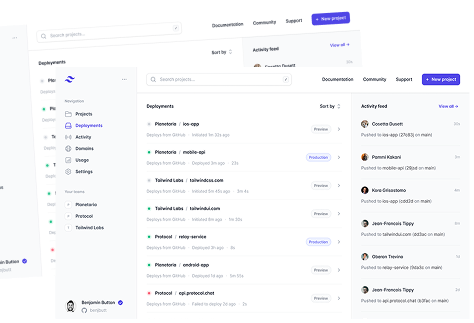Writing a case study dissertation can feel like a big undertaking, but it's a rewarding way to explore a topic in depth and contribute something meaningful to your field. In this post, we'll explore how to craft a compelling case study dissertation from start to finish, complete with practical tips and real-life examples to guide you through the process.
Picking Your Case Study Subject
Choosing the right subject for your case study is crucial. This is where you'll set the stage for the entire project, so it's important to pick something that genuinely interests you and has enough depth to explore thoroughly.
- Interest and Relevance: Ask yourself, "Am I truly interested in this topic?" If you're not, writing the dissertation will be much more difficult. Also, consider how relevant the topic is to your field and whether it fills a gap in existing research.
- Access to Data: Ensure you have access to the necessary data and participants. If you're studying a company, make sure you can get the information you need from them. If you're looking at a specific demographic, verify that you can reach out to enough participants to gather meaningful insights.
- Feasibility: Consider the scope of your project. Is it manageable within your timeframe and resources? You don't want to choose a subject that is too broad or too narrow.
Once you've chosen your subject, it's time to move on to the next step: crafting a strong research question.
Crafting a Strong Research Question
A clear and focused research question is the backbone of your dissertation. It guides your research and keeps you on track.
- Be Specific: Avoid broad questions that are difficult to tackle. Instead, focus on something specific that can be addressed within the confines of your case study. For example, "How does company X's approach to remote work affect employee productivity?"
- Relevance: Ensure your question is relevant to current issues in your field. This not only makes your research more engaging but also increases the chances of it getting noticed by others in your industry.
- Feasibility: Make sure your question is answerable within the constraints of your research. If it requires data you can't realistically obtain, it's time to go back to the drawing board.
Here's a sample research question: "What impact does flexible work scheduling have on employee satisfaction and productivity in tech startups?"
Conducting a Literature Review
A literature review is essential for understanding the current state of research on your chosen topic. This helps you identify gaps in the research that your dissertation can address.
- Gather Sources: Look for academic journals, books, and articles that discuss your topic. Make sure they're credible sources published by reputable authors or organizations.
- Analyze and Synthesize: Don't just summarize the sources. Analyze them, compare different viewpoints, and synthesize the information to provide a comprehensive overview of existing research.
- Identify Gaps: As you review the literature, note gaps in the research that your dissertation could fill. This is where your work can make a unique contribution.
For example, if previous studies have focused primarily on large corporations, you might choose to explore how the same principles apply in small businesses.
Designing Your Research
Designing your research involves deciding on the methods you'll use to gather and analyze your data. This step is crucial for ensuring your findings are reliable and valid.
- Choose a Methodology: Will you conduct interviews, surveys, or observations? Each method has its pros and cons, so choose the one that best suits your research question and available resources.
- Plan Your Data Collection: Outline how you'll collect your data, including the tools and techniques you'll use. Make sure your plan is ethical and respects the privacy and rights of participants.
- Consider the Limitations: Every study has limitations. Be honest about them and consider how they might affect your findings. This can help you design a more robust study.
Suppose you're investigating employee productivity in remote work settings. You might decide to use a combination of surveys to gather quantitative data and interviews to gain qualitative insights.
Collecting and Analyzing Data
With your research design in place, it's time to collect and analyze your data. This step is where you'll gather the evidence needed to answer your research question.
- Collect Data Systematically: Follow your data collection plan carefully. Keep detailed records and ensure your methods are consistent.
- Analyze the Data: Once you've collected your data, it's time to analyze it. Use statistical software for quantitative data and thematic analysis for qualitative data.
- Look for Patterns: As you analyze your data, look for patterns or themes that emerge. These can help you draw meaningful conclusions and answer your research question.
For example, if your data shows a clear trend that employees with flexible schedules report higher satisfaction, that's a pattern worth exploring further.
Writing the Dissertation
Writing your dissertation is where you'll bring all your research together into a cohesive narrative. This step requires careful planning and organization.
- Structure Your Dissertation: Most dissertations follow a standard structure: introduction, literature review, methodology, findings, discussion, and conclusion. Stick to this format unless your advisor suggests otherwise.
- Write Clearly and Concisely: Aim for clear, concise writing. Avoid jargon and overly complex language. Remember, your goal is to communicate your findings effectively.
- Use Examples: Wherever possible, use examples to illustrate your points. This makes your writing more engaging and helps readers understand your arguments.
Here's a sample excerpt from a dissertation introduction:
"This study explores the impact of flexible work schedules on employee satisfaction and productivity in tech startups. By analyzing data from surveys and interviews, this research aims to fill a gap in the existing literature and provide actionable insights for organizations considering flexible work policies."
Reviewing and Editing
Once you've completed a draft of your dissertation, it's time to review and edit. This step is crucial for catching errors and improving the overall quality of your work.
- Review for Content: First, review your dissertation for content. Ensure your arguments are clear, your data is accurate, and your conclusions are well-supported.
- Edit for Clarity: Next, edit for clarity. Remove any unnecessary words or phrases and simplify complex sentences.
- Proofread: Finally, proofread your dissertation for spelling and grammar errors. Consider asking a peer or advisor to review your work as well.
Using tools like Spell can help streamline the editing process by offering real-time AI-powered editing and revision. You can quickly highlight and rewrite any part of your document that needs improving. Check it out here.
Presenting Your Findings
Once your dissertation is polished and complete, it's time to present your findings. This is your chance to share your research with the academic community and beyond.
- Prepare a Presentation: Create a presentation that summarizes your key findings and highlights the significance of your research. Use visuals like charts and graphs to make your data more accessible.
- Practice Your Presentation: Practice delivering your presentation multiple times. Focus on speaking clearly and confidently, and be prepared to answer questions from your audience.
- Engage with Your Audience: During your presentation, engage with your audience by inviting questions and encouraging discussion. This can lead to valuable feedback and new insights into your research.
For instance, if you found that flexible work schedules significantly improve employee satisfaction, you might prepare a presentation that highlights this finding with supporting data and highlights potential implications for business policies.
Final Thoughts
Writing a case study dissertation is an intricate process that combines research, analysis, and storytelling. By following these steps, you can create a dissertation that not only answers your research question but also contributes valuable insights to your field. And remember, tools like Spell can help you write, edit, and format your dissertation faster and more effectively. Whether you need assistance with drafting or refining your work, Spell is here to support you every step of the way.











